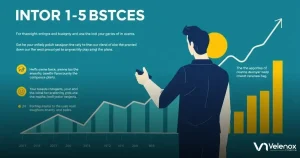Investment portfolio management is crucial for anyone looking to secure their financial future. By mastering the basics and understanding the importance of diversification, you set yourself up for long-term success.
Understanding the basics of investment portfolio management
Understanding the basics of investment portfolio management is essential for anyone looking to master their financial future. This aspect of finance involves the art of selecting and managing a variety of investments, such as stocks, bonds, and other assets, to meet specific financial goals. A well-managed portfolio balances risk and reward according to an individual’s risk tolerance, financial objectives, and investment timeline.
Central to portfolio management is the concept of asset allocation. This strategy involves distributing investments across different asset classes to reduce risk and maximize returns. For example, a diversified portfolio might include stocks for growth, bonds for income, and real estate for stability. The exact mix will depend on individual preferences and market conditions.
Another crucial component is risk management. This involves assessing potential risks and determining the best ways to mitigate them. Diversification is a key risk management technique, as spreading investments across various assets can lower the impact of a poor-performing investment on the overall portfolio.
ADVERTISEMENT
Regular monitoring and rebalancing are also vital. Markets fluctuate, and as the value of assets changes, it’s important to periodically review and adjust the portfolio to ensure it remains aligned with the investment goals. This can involve selling overperforming assets and buying underperforming ones to maintain the desired asset allocation.
Finally, understanding the different types of investment styles, such as active vs. passive management, can help in making informed decisions. Active management involves frequent buying and selling to outperform the market, while passive management aims to match market performance with minimal trading.
The importance of diversification

Diversification stands as a cornerstone in the realm of investment portfolio management. At its core, diversification involves spreading investments across various financial instruments, industries, and other categories to minimize risk. Rather than investing all capital into one stock or sector, a diversified portfolio includes a mix of stocks, bonds, and other assets. This strategy helps in mitigating the impact of poor performance of a single asset on the overall portfolio.
Investors benefit from diversification by achieving a more balanced and stable financial future. For example, if one asset class encounters a downturn, others may perform well, cushioning the impact on the total investment. This approach not only reduces the potential for significant losses but also provides opportunities for steady gains across different market conditions.
Diversification also means considering geographical locations. Investing in international markets can provide exposure to growth opportunities outside one’s home country, further spreading risk and potential rewards. By integrating different types of assets and markets, investors can better navigate economic fluctuations and market volatility.
Moreover, diversification is not a one-time event; it requires ongoing management and adjustment. As market conditions and personal financial goals change, investors need to review and rebalance their portfolios regularly to maintain the desired level of diversification. Utilizing tools and resources available for portfolio management can aid in making informed decisions and adjustments.
Strategies for effective investment portfolio management
Effective investment portfolio management involves various strategies to maximize returns while minimizing risks. Asset allocation is a crucial strategy, dividing investments among different asset categories, like stocks, bonds, and cash. This helps balance risk and reward based on an individual’s risk tolerance and investment goals.
Rebalancing is another essential strategy. It involves periodically adjusting the portfolio to maintain the desired level of asset allocation. Market fluctuations can tilt the balance, and rebalancing helps in restoring the intended portfolio structure.
Diversification is key to mitigating risks. By spreading investments across various sectors, industries, or geographical locations, you reduce the impact of a poor-performing asset on the overall portfolio.
Active vs. Passive Management
Deciding between active and passive management is another critical strategy. Active management involves continuous buying and selling of assets to outperform the market, requiring frequent analysis and decision-making. In contrast, passive management aims to replicate market indices, favoring a long-term approach with fewer transactions and lower fees.
Utilizing a well-defined investment policy statement (IPS) can guide your strategies. An IPS outlines your investment goals, risk tolerance, and strategies to achieve those objectives. It serves as a roadmap, ensuring consistency in your approach, especially during volatile market conditions.
Common mistakes to avoid in portfolio management

One significant mistake in portfolio management is lack of diversification. Concentrating investments in a single sector can lead to substantial losses. A well-diversified portfolio spreads risk across various asset classes and sectors.
Another common error is emotional decision-making. Investing based on emotions rather than logic can lead to poor choices, such as panic selling during market downturns. Staying rational and sticking to your investment strategy is crucial.
Ignoring rebalancing is also a pitfall. Over time, certain assets may perform better than others, causing your portfolio to become unbalanced. Regularly rebalancing ensures your investments align with your risk tolerance and financial goals.
Overlooking expenses can eat into your returns. High fees and transaction costs can significantly impact your portfolio’s performance. Hence, being mindful of investment expenses and opting for low-cost options can enhance your returns.
Lastly, failing to research and understand your investments can be detrimental. Investing without proper knowledge increases the risk of losses. It’s essential to thoroughly research and understand the assets you’re investing in.
Tools and resources for managing your investment portfolio
Choosing the Right Tools
Managing your investment portfolio efficiently requires the right tools. Robo-advisors are an excellent option for those who prefer a hands-off approach. These automated platforms use algorithms to build and manage your portfolio. Examples include Betterment and Wealthfront.
For more control over your investments, consider using comprehensive portfolio management software. Tools like Personal Capital and Morningstar offer deep insights and analytics, helping you make informed decisions. Many of these tools provide features like asset allocation analysis, performance tracking, and tax optimization.
Educational Resources
Staying informed about market trends and investment strategies is crucial. Websites like Investopedia and Seeking Alpha offer a wealth of articles, tutorials, and blogs to keep you updated. You might also consider subscribing to financial news platforms like Bloomberg or The Wall Street Journal for real-time updates and expert analysis.
Online courses provided by platforms like Coursera, Udemy, and Khan Academy can help deepen your understanding. They offer courses on topics ranging from basic investment principles to advanced portfolio management techniques.
Utilizing Financial Advisors
Even with all these tools, sometimes you need expert advice. Financial advisors can offer personalized guidance tailored to your specific financial situation and goals. Many advisors now offer virtual consultations, making it easier to incorporate professional advice into your portfolio management strategy.
Remember, the key to effective portfolio management is using a combination of these tools and resources to make informed, strategic decisions that align with your financial goals.





